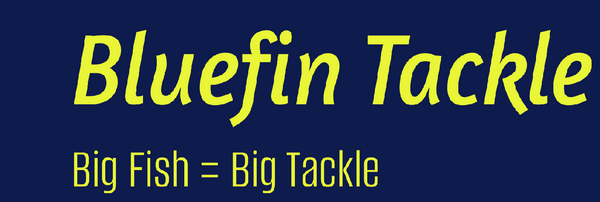
How to Put New Fishing Line on a Spinning Reel
Share
How to Put New Fishing Line on a Spinning Reel
Fishing is an enjoyable and rewarding pastime, but to ensure a successful and stress-free experience, maintaining your equipment is crucial. One of the most fundamental aspects of fishing gear maintenance is replacing the fishing line on your spinning reel. Over time, fishing line becomes worn, tangled, or brittle, leading to poor performance and lost fish. Knowing how to spool a spinning reel properly ensures better casting distance, fewer tangles, and a more enjoyable fishing experience.
In this comprehensive guide, we will walk you through the step-by-step process of putting new fishing line on a spinning reel. Whether you are a beginner or an experienced angler, following these instructions will help you spool your reel correctly and efficiently.
Materials Needed
Before you begin, gather the necessary materials:
- Spinning reel
- New fishing line (monofilament, fluorocarbon, or braided line)
- Scissors or line cutters
- A clean, soft cloth (optional for handling the line)
- A pencil or rod to hold the spool
- Reel seat or fishing rod (recommended but optional)
- A damp towel or glove (for added tension while spooling)
Step 1: Choose the Right Fishing Line
Selecting the right type of fishing line is essential for optimal performance. The three main types of fishing lines include:
- Monofilament Line: Affordable and easy to use, monofilament is ideal for beginners and general fishing applications. It has good stretch and is less prone to tangling.
- Fluorocarbon Line: Known for its near-invisibility underwater, fluorocarbon is great for clear water fishing. It is more abrasion-resistant than monofilament but has less stretch.
- Braided Line: Stronger and more durable, braided line is ideal for heavy cover fishing. It has little to no stretch and provides excellent sensitivity.
Ensure the line you choose is suitable for your target fish species and fishing conditions.
Step 2: Prepare the Spinning Reel
If your reel already has an old line, remove it by cutting it off or unwinding it. This prevents tangles and ensures a clean start. If you are using a spinning rod, attach the reel to the rod to make the spooling process easier.
Step 3: Open the Bail Arm
The bail arm is the metal wire on the spinning reel that guides the line onto the spool. Flip the bail arm open before attaching the new line to the spool. If you skip this step, the line won’t spool correctly.
Step 4: Attach the Line to the Spool
Tie the fishing line to the spool using an arbor knot or an improved clinch knot. Here’s how to tie an arbor knot:
1. Wrap the line around the spool.
2. Tie an overhand knot around the standing line.
3. Tie a second overhand knot at the end of the tag end.
4. Pull both knots tight against the spool.
5. Trim any excess line to prevent tangling.
For braided line, consider adding a monofilament backing to prevent slippage, as braided line tends to slide on the spool.
Step 5: Apply Tension and Begin Spooling
To ensure a smooth, even application of the line, follow these steps:
1. Place the spool of new fishing line on a flat surface, ensuring it comes off in the same direction as the spinning reel’s rotation.
2. Thread the line through the first guide on your fishing rod (if using one).
3. Hold the line with light pressure using a damp towel or glove.
4. Slowly turn the reel handle to begin winding the line onto the spool.
Applying light, consistent tension prevents loose line and potential tangles.
Step 6: Check for Line Twist
Line twist is a common issue when spooling a spinning reel. To avoid this:
- Every 20-30 turns, stop and check if the line is twisting.
- If you notice excessive twists, flip the spool over and continue spooling.
- Ensure the line is feeding off the spool smoothly and not in loops.
Step 7: Fill the Spool to the Right Capacity
A common mistake is overfilling or underfilling the spool. Here’s how to get it right:
- Leave about 1/8 inch of space between the line and the edge of the spool.
- Avoid overfilling, as it increases the risk of backlash and tangles.
- Avoid underfilling, as it reduces casting distance and performance.
Step 8: Close the Bail Arm and Secure the Line
Once the spool is filled to the right level:
- Flip the bail arm back to its original position.
- Pull the line slightly to ensure it is properly seated.
- Cut the line, leaving a few inches of excess for tying lures or hooks.
Step 9: Test the Line and Adjust If Necessary
After spooling, test the line by gently pulling and releasing it. Check for any loops, twists, or uneven winding. If needed, remove and respool sections to correct any issues.
Step 10: Tie on a Hook, Lure, or Swivel
To prepare for fishing, tie your preferred hook, lure, or swivel to the end of the line. Popular knots include the improved clinch knot or Palomar knot for secure attachment.
Tips for Success
- Use a Reel Spooling Station: If available, a spooling station helps maintain consistent tension and direction.
- Avoid Over-Tensioning: Too much tension can weaken the line.
- Replace Line Regularly: Change your fishing line every few months or as needed based on usage.
- Store Line Properly: Keep your spool of line in a cool, dark place to prevent degradation.
Conclusion
Putting new fishing line on a spinning reel is a fundamental skill that every angler should master. By following these steps—choosing the right line, properly securing it to the reel, applying consistent tension, and ensuring an even spool—you can improve your fishing efficiency and success. Regular maintenance of your fishing line ensures smooth casting, prevents tangles, and enhances your overall fishing experience. Happy fishing!
